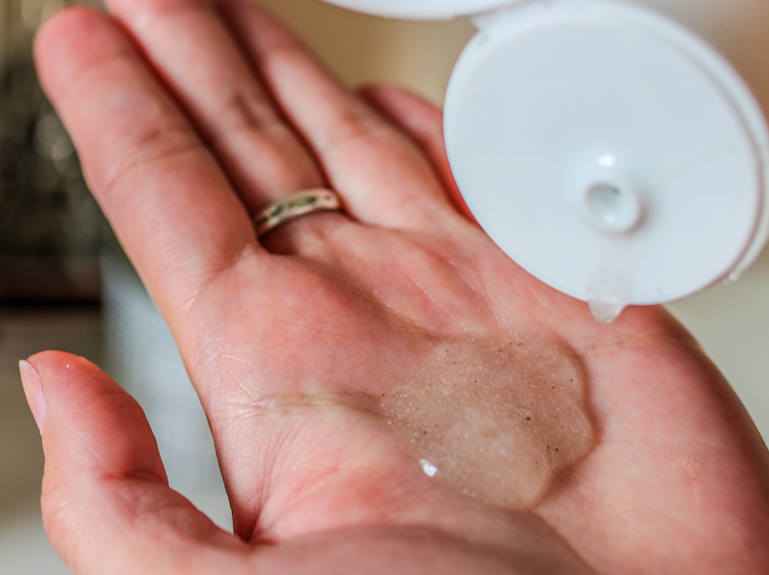Microplastics Could Be Contaminating Your Fish Dish

Daniela is a nationally published author, health/fitness coach and wellness influencer. Her contributions have been featured in premiere publications and she works with leading brands to create content that promotes holistic health. She is the founder of DeeVita Wellness, where she provides personalized nutrition and fitness programs.

Microplastics Could Be Contaminating Your Fish Dish
By: Daniela DeFeo
There is a pandemic that’s flooding the nation and may be flowing right onto your dinner plate.
Fish and seafood is considered one of the healthiest food sources on the planet. With a wholesome dose of Omega 3 fatty acids, low-fat, high-quality protein, vitamins and minerals such as iodine and vitamin D, eating fish as part of a healthy diet is recommended to support a strong body - inside, out. However, what could be drowning a healthy food chain from marine base to human consumption, is the contamination of the world’s water systems from plastic waste.
 Eight million tons of plastic are dumped in oceans every year, being broken down into microplastics, measuring 5 millimeters or less in diameter. These microplastics come in the form of “nurdles”, small lentil-sized plastic pellets and microbeads, which can be found in toiletries such as facial scrubs, shower gels, toothpaste and even some cosmetic products.
Eight million tons of plastic are dumped in oceans every year, being broken down into microplastics, measuring 5 millimeters or less in diameter. These microplastics come in the form of “nurdles”, small lentil-sized plastic pellets and microbeads, which can be found in toiletries such as facial scrubs, shower gels, toothpaste and even some cosmetic products.
 The concern? Although microplastics could be consumed and eventually passed by fish in the water systems, their flesh may absorb some of the compounds from these plastics, i.e. PSB’s and other heavy metals. But, before you go casting an anchor on fish and seafood all together, more scientific research is required to determine the effects of microplastic-tainted fish on human health. With supplementary data indicating microplastics may come from sources other than fish and seafood, the benefits of consuming your next fresh catch, outweighs the risk.
The concern? Although microplastics could be consumed and eventually passed by fish in the water systems, their flesh may absorb some of the compounds from these plastics, i.e. PSB’s and other heavy metals. But, before you go casting an anchor on fish and seafood all together, more scientific research is required to determine the effects of microplastic-tainted fish on human health. With supplementary data indicating microplastics may come from sources other than fish and seafood, the benefits of consuming your next fresh catch, outweighs the risk.
So, what can you do as a health-conscious, seafood loving consumer? Below are several ways to steer you in the right direction to make informed, eco-conscious purchasing decisions.
Meal Prep
 Implement small changes to what is served at the dinner table. Purchase fish and seafood that is caught and/or farmed from certified, sustainable sources to minimize potential risks from environmental impacts. Look for eco-labels such as farmed responsibly and certified sustainable, which ensure fisheries are in compliance with ecological and management standards. Smaller fish like sardines and herring are optimum choices over larger fish such as tuna and halibut, as their diets mostly consist of plant and algae. In the hierarchy of the food chain, these smaller fishes would be eaten by their predatory counterpart, who are also more likely to ingest microplastics.
Implement small changes to what is served at the dinner table. Purchase fish and seafood that is caught and/or farmed from certified, sustainable sources to minimize potential risks from environmental impacts. Look for eco-labels such as farmed responsibly and certified sustainable, which ensure fisheries are in compliance with ecological and management standards. Smaller fish like sardines and herring are optimum choices over larger fish such as tuna and halibut, as their diets mostly consist of plant and algae. In the hierarchy of the food chain, these smaller fishes would be eaten by their predatory counterpart, who are also more likely to ingest microplastics.
Alternatively, consider diversifying meals a few times a week by going meat-free and/or buying organic, lean meat such as poultry, beef or pork. Variety at mealtime is a sure way to keep things interesting at the dinner table, and may reduce the risks associated with fish intake. Be sure to hydrate with water, as it’s crucial for many bodily processes and will assist to rid your body of toxins.
Disposables
 Cast an anchor on single-use plastics. Avoid the use of water bottles, straws, cutlery and plates which may eventually find their way into waterways, polluting our waters and marine life. Plastic bottles, for example, can be replaced with reusable bottles and/or in-home filtration water system, while dishware and silver cutlery can replace disposable ones.
Cast an anchor on single-use plastics. Avoid the use of water bottles, straws, cutlery and plates which may eventually find their way into waterways, polluting our waters and marine life. Plastic bottles, for example, can be replaced with reusable bottles and/or in-home filtration water system, while dishware and silver cutlery can replace disposable ones.
Flushable wipes used for sanitary and convenience purposes, are not so flushable after all. These, along with ear swabs, cotton buds, sanitary pads and tampons typically contain plastic which do not disintegrate. Instead, opt for eco-friendly, biodegradable products that won’t adversely affect the marine eco-system.
Skin Care
 Avoid or limit products containing micro beads. Hidden in various items used on a daily basis, micro beads are the blight of the deep-sea, as they’re too small to be filtered out by the sewer system - heading straight down the drain into the waterways. Body lotions, shaving cream, exfoliators, deodorants, soaps, sunscreens and certain makeup items may contain plastic. So, what’s a consumer to do? Look at the ingredient list for indicators like polyethylene or polypropylene, which are common plastics that make up microbeads. Buy organic/natural products made from environmentally-friendly ingredients and/or do-it-yourself; make your own skincare products using natural ingredients like honey, baking soda and almonds.
Avoid or limit products containing micro beads. Hidden in various items used on a daily basis, micro beads are the blight of the deep-sea, as they’re too small to be filtered out by the sewer system - heading straight down the drain into the waterways. Body lotions, shaving cream, exfoliators, deodorants, soaps, sunscreens and certain makeup items may contain plastic. So, what’s a consumer to do? Look at the ingredient list for indicators like polyethylene or polypropylene, which are common plastics that make up microbeads. Buy organic/natural products made from environmentally-friendly ingredients and/or do-it-yourself; make your own skincare products using natural ingredients like honey, baking soda and almonds.
Fish and seafood are a powerhouse food source, rich in nutritional value and beneficial for a strong mind and healthy body. With the rise in plastic pollution filling our waterways, it’s no wonder a spotlight is being shone on the effects of the global marine environment and fish we consume. However, implications on human health is far from being substantiated, with further research required.
Bottom line - make informed purchase decisions and keep fish on the menu. It’s probably no more detrimental than water consumed from plastic bottles, lotion lathered on skin or feminine hygiene products – all of which may be plastic-infused.
References:- https://www.nurdlehunt.org.uk/whats-the-problem.html
- https://www.mcsuk.org/responsible-seafood/top-ten-seafood-tips
- https://www.mcsuk.org/who-we-are/our-goals
- https://www.msc.org/what-we-are-doing/our-approach/what-is-sustainable-f...
- http://www.wetwipesturnnasty.com
- https://www.seafoodsource.com/features/the-potential-danger-of-microplas...
- https://www.drweil.com/diet-nutrition/food-safety/plastics-in-fish/
- https://www.beatthemicrobead.org
- https://www.nationalgeographic.com/magazine/2018/06/plastic-planet-healt...
- https://link.springer.com/article/10.1007/s40572-018-0206-z
For more info on Daniela Defeo, check out her website at deevitawellness.com and follow Daniela on Instagram @deevitareflections or right here at Muscle Insider at Daniela Defeo.

